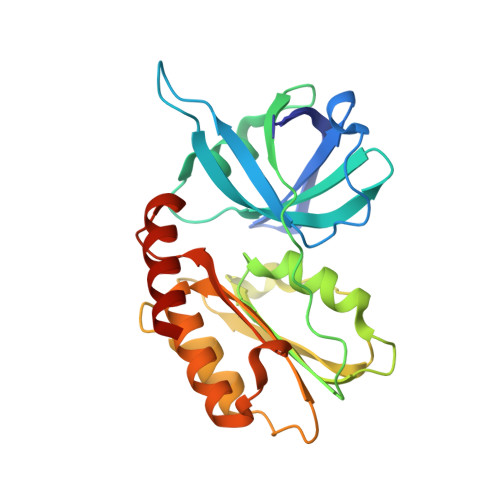Flavin-containing siderophore-interacting protein of Shewanella putrefaciens DSM 9451 reveals common structural and functional aspects of ferric-siderophore reduction.
Trindade, I.B., Fonseca, B.M., Catarino, T., Matias, P.M., Moe, E., Louro, R.O.(2025) J Biol Inorg Chem 30: 241-255
- PubMed: 40080164
- DOI: https://doi.org/10.1007/s00775-025-02106-z
- Primary Citation of Related Structures:
8C4L - PubMed Abstract:
Shewanella are bacteria widespread in marine and brackish water environments and emergent opportunistic pathogens. Their environmental versatility depends on the ability to produce numerous iron-rich proteins, mainly multiheme c-type cytochromes. Although iron plays a vital role in the versatility of Shewanella species, very few studies exist regarding the strategies by which these bacteria scavenge iron from the environment. Siderophore-mediated iron transport is a commonly employed strategy for iron acquisition, and it was identified among Shewanella spp. over two decades ago. Shewanella species produce hydroxamate-type siderophores and iron removal from these compounds can occur in the cytoplasm via Fe(III)-siderophore reduction mediated by siderophore-interacting proteins (SIPs). The genome of Shewanella putrefaciens DSM 9451 isolated from an infected child contains representatives of the two different families of SIPs: the flavin-containing siderophore reductase (SbSIP) and the iron-sulfur cluster-containing ferric-siderophore reductase (SbFSR). Here, we report their expression, purification, and further biochemical characterization of SbSIP. The structural and functional characterization of SbSIP and comparison with the homologous SIP from Shewanella frigidimarina (SfSIP) revealed similarities between these proteins including a common binding pocket for NADH, NADPH, and siderophore substrates plus a pronounced redox-Bohr effect that ensures coupled transfer of electrons and protons in the physiological pH range. These mechanistic aspects open the door for further investigations on developing drugs that interfere with the iron metabolism of these bacteria and thereby prevent their spread.
- Avenida da República (EAN), Instituto de Tecnologia Química e Biológica António Xavier da Universidade Nova de Lisboa, 2780-157, Oeiras, Portugal.
Organizational Affiliation:

















